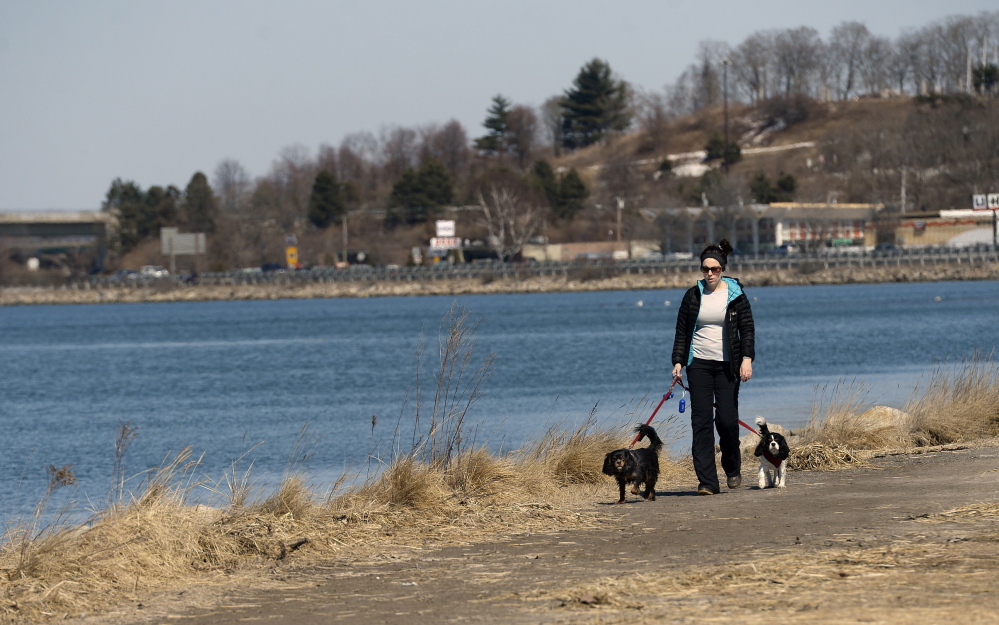Mainers are typically less obese and more physically active than the nation overall, according to statistics released Wednesday that measure the health of each county in the United States. But whether you’re likely to live a healthy lifestyle depends greatly on which county you live in.
For instance, those who live in Cumberland or York counties are much more likely to play sports and be trim. But in Maine’s rural counties, such as Somerset, people are more prone to smoke and be obese, according to The County Health Rankings.
The annual rankings were released Wednesday by the University of Wisconsin Population Health Institute, which since 2010 has tracked the health of each U.S. county based on dozens of metrics.
The rankings show that 16 percent of Cumberland County residents are sedentary, compared to the national median of 27 percent. Obesity rates for Cumberland County residents are also lower – 22 percent in the southern Maine county versus the U.S. median of 31 percent. Statewide, 28 percent of Mainers are obese and 21 percent considered sedentary.
For Nancy Dorrans, 53, a member of the Portland-based Maine Outdoor Adventure Club, Cumberland County’s high ranking for healthy living is not surprising.
With 700 members, the club typically offers three or four activities per week, from hiking at Bradbury Mountain to cross-country skiing in Portland or trips farther out. Dorrans said she’s become more active since moving from New Hampshire to Maine in 2000. She said it’s easy to be active outdoors in Maine, where there’s so much to do within a two-hour drive of Portland, whether it’s swimming in the ocean, canoeing a river or hiking a mountain.
“Since I moved here, I’ve bought a kayak and a road bike,” Dorrans said. “We are a club where people can easily make a lifestyle choice to be healthy. People find us.”
Since she lives in downtown Portland, she also walks more than she used to.
Dorrans, a Dearborn, Michigan native, said when she visits her home state, it’s noticeable how many more people are out of shape compared to Maine.
But Mainers are not uniformly healthy.
Outside of the coastal southern Maine counties of York, Cumberland and Sagahadoc – which make up more than 500,000 of Maine’s 1.3 million population – many of Maine’s rural counties perform worse than the national median.
‘ANEMIC PUBLIC HEALTH SYSTEM’
In Somerset County, which has a population of 50,000 people, the obesity rate is 34 percent, while 26 percent smoke, both above the national median. The rankings cited national figures in terms of the median instead of an average because statistical metrics varied by county across the country.
Erika Ziller, a University of Southern Maine professor with the college’s Maine Rural Health Research Center, said health statistics are closely tied to higher poverty levels found in rural Maine.
“These health predictors are really about socio-economic status,” Ziller said. “People living in the rural counties tend to have less income and less education, and these health factors are strongly correlated with that.”
On top of the higher poverty found in rural Maine, there are greater barriers to accessing health care. There are often longer drives to visit a doctor or dentist, Ziller said. The isolating nature of rural life also means there are fewer community support structures.
In addition, Maine’s public health system, except for Portland, is entirely handled by the state, making rural access to care even more difficult, she said. In many states, there are county health departments that handle immunizations and other public health duties.
“We have a pretty anemic public health system in Maine,” Ziller said.
As for what can be done about poor health, Deborah Deatrick, senior vice president of community health at MaineHealth, said the hospital system uses the research as a starting point for initiatives aimed at improving public health. MaineHealth, the parent company of Maine Medical Center, releases the Maine Health Index, which is an analysis of the County Health Rankings and America’s Health Rankings.
America’s Health Rankings is a similar statistical report that assesses health ratings on a statewide level. Maine slipped from 16th in 2013 to 20th in 2014 in America’s Health Rankings, which are compiled by the United Health Foundation and released every December.
Deatrick said the Maine Health Index is not only a research report, but a way to identify weaknesses in Maine residents’ health and determine strategies to help improve it. As a result, initiatives have been launched or expanded – including programs to target obesity, childhood immunizations, prescription drug abuse, smoking and preventable hospitalizations.
She said, for example, that MaineHealth partners with other organizations to boost anti-tobacco, pro-vaccination and healthy eating campaigns.
“We’ve been putting a stake in the ground, saying, ‘These are our priorities, and what can we do to make things better?'” Deatrick said.
Many Mainers, once they get into the health care system, are well-served, Deatrick said, but many have unhealthy lifestyles or have a difficult time accessing the system. They might be uninsured or live in a remote area, for instance.
THE FIGHT STARTS EARLY
One of the initiatives is Let’s Go, a $1.2 million program funded by several organizations, including Harvard Pilgrim insurance, MaineHealth, United Way and others. Let’s Go – which now has a presence in every Maine county – aims to improve nutrition and physical activity in schools and in before-school and after-school programs. The group pushes to preserve recess, encourages walking or biking to school and tries to minimize sugary drinks and unhealthy snacks at school parties. For instance, at an after-school program, the children might now play in the gym before doing their homework.
“We also encourage physical activity as part of the school lesson plan when possible. So instead of sitting at a desk learning about measurements, maybe the students measure something on the floor and jump from one spot to another,” said Heidi Kessler, a senior program manager for Let’s Go.
Kessler agreed the challenges are greater in Maine’s rural schools, where it’s often not possible to walk or ride a bicycle to school, and some children may have hour-long bus rides, limiting their physical activity before and after school.
While there’s no proof that Let’s Go has moved the needle on healthy lifestyles, children’s obesity has leveled off nationally. In Maine, 33 percent of fifth-graders reported eating five or more fruits and vegetables per day in 2013, up from 28 percent in 2009, according to the Maine Health Index.
“I don’t know whether Let’s Go is making a difference, but I would like to think that in some way it is contributing,” Deatrick said.
Send questions/comments to the editors.






Comments are no longer available on this story